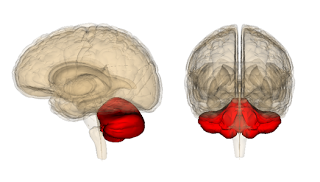 |
| Wikimedia Commons image |
Clay Dillow
PopSci
The day when doctors can patch up the human brain with electronics, cyborg-style, hasn’t dawned just yet. But if the rats at Tel Aviv University are any indication, that day may not be so very far away. Researchers there have developed a synthetic cerebellum that has restored lost brain function in rats, demonstrating that artificial brain analogs can potentially replace parts of the brain that aren’t functioning properly. Paging officer Alex Murphy.
The team’s synthetic cerebellum is more or less a simple microchip, but can receive sensory input from the brainstem, interpret that nerve input, and send the appropriate signal to a different region of the brainstem to initiate the appropriate movement. Right now it is only capable of dealing with the most basic stimuli/response sequence, but the very fact that researchers can do such a thing marks a pretty remarkable leap forward.
To achieve such a breakthrough, the cerebellum was a pretty ideal place to start. Its architecture is simple enough and one of its functions is to orchestrate motor movements in response to stimuli, making it easy enough to test. Using what they already knew about the way a rat’s cerebellum interacts with its brainstem to generate motion, they built a chip that mimicked that kind of neural processing and activity.
linkwithin_text=’Related Articles:’

Be the first to comment on "Israeli Researchers Build a Rat Cyborg With a Digital Cerebellum"